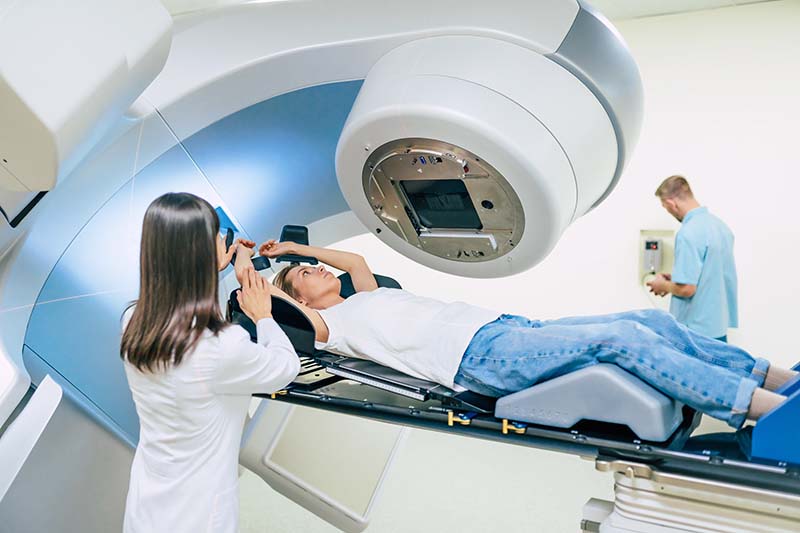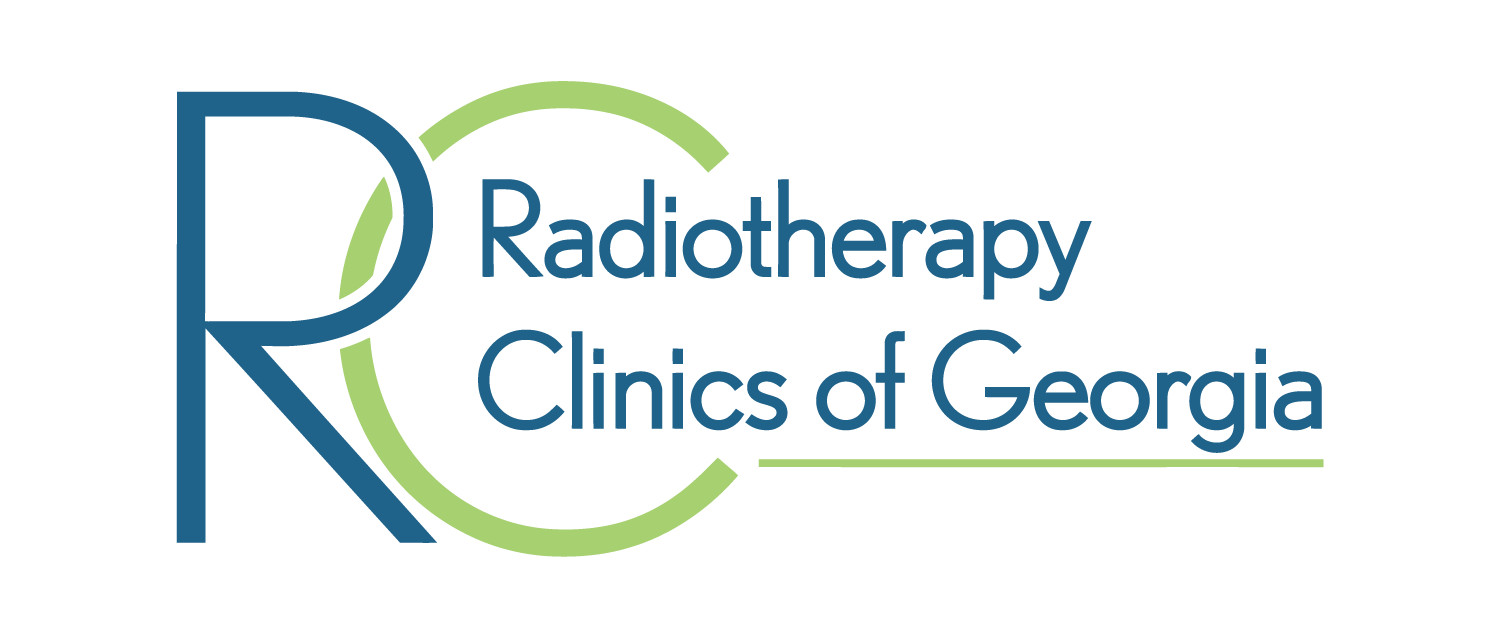
If you received a breast cancer diagnosis, you might be anxious or curious about the next steps. Men and women can both be diagnosed with breast cancer, and there are different treatments available based on the type and stage of the cancer. For many patients, their personalized treatment plan includes radiation therapy. This is extremely common for breast cancer patients after surgery and sometimes before surgery to reduce the size of the tumor.
What is Radiation Therapy for Breast Cancer?
There are a few different radiation therapy treatments used for breast cancer patients. The most common type is external radiation therapy. High-energy X-rays are carefully aimed to kill the cancer cells while doing everything possible to avoid nearby healthy skin and organs.
For breast cancer patients, this usually means a few weeks of daily treatments for about 15-30 minutes each session. If hypofractionated radiation therapy is used, you’ll receive a higher dose during each session which may make the daily sessions a bit longer. However, your total number of sessions can be reduced by a week or two.
The radiation oncologist creates the plan for directing the beams to the specific area of the breast where the cancer was removed (or will be removed). In some cases it’s also directed towards nearby lymph nodes where cancer may have spread.
Radiation Therapy After Lumpectomy
A lumpectomy is a surgical approach that removes only the cancer and some surrounding tissue to keep as much of the breast intact as possible. Most patients receive external beam radiation therapy following a lumpectomy to destroy any cancer cells that may still remain in the breast but can’t be seen by the human eye.
For some women with early-stage breast cancer, a different type of radiation therapy may be used called HDR brachytherapy. HDR stands for high dose rate, which means that high doses of radiation are delivered directly into the breast via small radioactive seeds. An applicator is placed in the breast and left there for about 5-7 days. During each treatment session at the cancer center, the seeds are placed inside the applicator for several minutes to deliver radiation to the surgery site. Then the seeds are removed from the applicator. This is repeated several times over the course of a week or so with the radioactive seeds.
Radiation Therapy After Mastectomy
Because all of the breast tissue is removed during a mastectomy, it’s more likely that all of the cancerous cells have been removed with it. Because of this, it isn’t recommended as frequently as it is for patients who undergo a lumpectomy. Doctors may recommend radiation therapy following a mastectomy when they determine that there are enough risk factors involved. These factors include the number of involved lymph nodes, the size of the cancer, and the location of cancer in relation to the mastectomy. They may also use radiation therapy to treat breast cancer that has spread to other areas of the body.
Radiation Therapy Before Breast Cancer Surgery
If radiation therapy is recommended before surgery, it’s usually in an attempt to shrink the tumor before the surgeon attempts to remove it. This is called neoadjuvant therapy and it helps reduce the amount of cancer cells present at the time of surgery. This results in fewer cells to potentially spread throughout the body during the procedure. Your oncologist and your breast surgeon will discuss the need for neoadjuvant therapy, which can be radiation therapy or other types of cancer treatments.
Radiation Therapy for Metastatic Breast Cancer
Cancer that has spread to other parts of the body is called metastatic breast cancer. The cancer cells found in other areas are technically breast cancer and treated as such. In these instances, radiation therapy may be used to reduce the size of tumors that are causing pain in other areas of the body (i.e., lungs, brain, liver, etc.) outside of the breast.
The number of doses and frequency may be different for metastatic breast cancer patients. Your radiation oncologist will make a recommendation based on each specific patient’s needs and overall health status.
Related Blog: Internal vs External Radiation for Breast Cancer: How Do These Treatments Compare?
What to Expect at a Radiation Oncology Appointment
If radiation therapy is a part of your cancer treatment plan, you’ll need to schedule an appointment with the radiation oncologists for an initial consultation. When you call, tell them who else is on your cancer care team. The physicians can then talk to one another to discuss your care and recommended radiation therapy treatment plan.
By the time you arrive for your appointment with your radiation oncologist, he or she will likely have reviewed your medical records, images and discussed the timing of radiation therapy for you. The radiation oncologist will discuss the type of therapy recommended. If external beam radiation therapy is part of the plan, you are likely to have a simulation performed. This may be done the same day, or in some cases, at a future appointment. The radiation oncologist, physicist and dosimetrist will work together to use technologies that show them where the cancer is located and how they can best point the beams for maximum results while protecting nearby organs and tissue from unnecessary damage. During the simulation you’ll also lie down on the table where the radiation therapy is delivered so you can be placed in the exact spot that you’ll go into every time you come in. This is very important for accurate and consistent treatment.
Related Blog: Dealing With Breast Cancer Treatment Side Effects
Plan Ahead for Your Radiation Therapy Treatments
After discussing your treatment plan with your care team, try to prepare as much as possible to be comfortable, well-rested and remain as healthy as possible. Keep drinking water and try to exercise.
Thankfully the side effects of radiation therapy tend to be less intense compared to chemotherapy. But you may experience skin irritation from the radiation treatments as well as fatigue. Talk to your oncologist about what to expect and what you can do if you experience side effects.
Our team is especially compassionate and helpful when it comes to giving patients the information they need to get through their breast cancer treatments as easily as possible. With eight convenient Atlanta area locations, request an appointment for a radiation oncology consultation. Treatment can be done close to home without going into a large hospital.
Updated: November 2023




